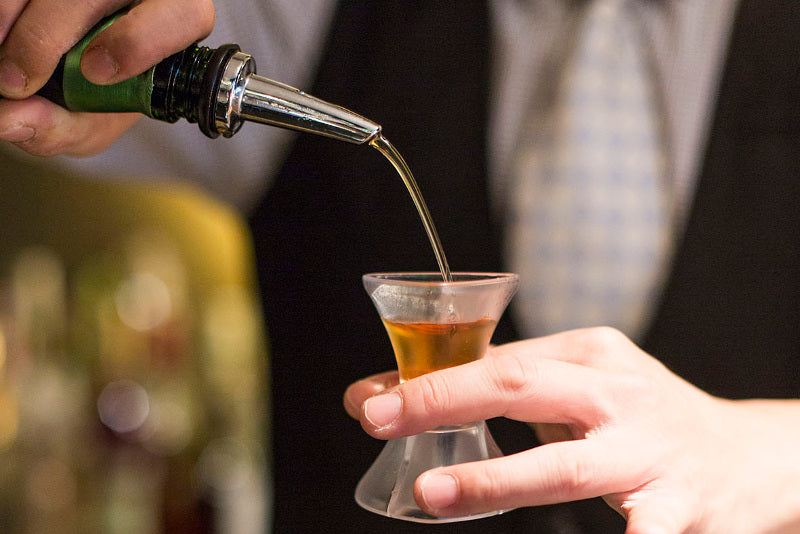
Sticky surfaces, broken speed pourers in the ice buckets and unaccounted for stock. Ah, the bar manager’s nightmare!
But before you go blaming your bar staff, you might want to investigate the other reasons for that missing drink.
According to Barmetrix, even well-run bars regularly lose 10-15% by volume of every served shot, with poorly run bars losing much more.
Of course, spotting the causes for this wastage early could save your profits in the long run. But what are you actually looking out for?
We have put together a list of the five most common signs of liquor waste and their causes to give you a head start:
1. Do you often see drips and pools of alcohol on your bar top?
Obviously, some drips are to be expected, but small pools and obvious spills are often a sign of something more. The key things to look our for during service hours are pourers leaking or measures being consistently over-filled. It’s so easy for this to happen during busy periods, but there are ;tools that can lessen the problem.
2. Are you constantly wiping down?
Sticky circles are really common when using generic jiggers to measure. Did you know that the round standard jigger causes a meniscus or bubble to form on top, which once lifted spills over onto your bar? That meniscus can account for 3-5 mL of over-poured liquor, most of which will end up directly on your bar top.
3. Broken speed pourers scattered around the bar
Generic speed pourers are not usually made for longevity, which means they are much more likely to break during use or when being changed. Particularly during busy and rush periods, if you are noticing pourers shoved in ice buckets or bar stations, you’re likely losing money.
4. New tool purchases on a monthly basis
The more speed pourers getting broken (or any tool for that matter), the more replacements required and that is going to hit your bottom line. Consider how often you are replacing these tools due to rusting, leaking or breakage. Are you just replacing them with the same again? If a staff member kept failing, would you not replace them? It may be more cost effective to invest in quality tools that will last much longer.

5. Unexplained amounts of comps, incorrect orders, staff drinks or missing bottles
As we’ve discussed, using generic jiggers makes a spill much more likely, but free pouring can also be risky with a large number of factors affecting the pour. This is inevitably going to mean a lot more over-pour than intended by staff, who will want to account for them as easily as possible.
Well, it’s pretty difficult to account for those spills, drips and splashes on your bar, but it all adds up – and stock take is where the wastage really shows. Let’s say you serve 100 gins per night on average. If you spill just 3ml per measure, that can mean three bottles or $120 worth of gin a week missing from stock take.
It’s not just stock. What if you had sold that gin? You would have made an extra $720 revenue in one week. That means you could be wasting $37,000 per year in gin alone!
The next step: Upgrade your bar tools
So, once you spot these signs of liquor waste in your bar operations, it's high time explore solutions beginning with upgrading your bar tools.
A few next steps you can take:
- Cheap or improperly maintained speed pourers can malfunction, leading to spills and over-pouring. That's why it's important to train staff on the proper use and maintenance of pourers. You also need to invest in durable, high-quality, properly calibrated speed pourers especially the ones that come with warranties. Modular speed pourers are also becoming more popular for being cost-effective as you often only need to replace corks or breather tubes due to wear and tear.
- While free-pouring can be effective for some bartenders, untrained staff might miscalculate. Some bartenders may often prefer one technique over the other. Consider providing jiggers and approved measuring tools as a backup for your bartenders of various skill sets and preference.
- As you invest in proper bar tools, it's equally important to provide proper training and support to your bartenders Establish a culture that respects their unique pouring styles but also instill good business practices.
Liquor is the bread and butter of every bar. It's the building block of every good drink, every satisfied customer and profitable business—that's why we treat it with utmost care. Remember, even small reductions in waste can translate to substantial gains in the long run.


